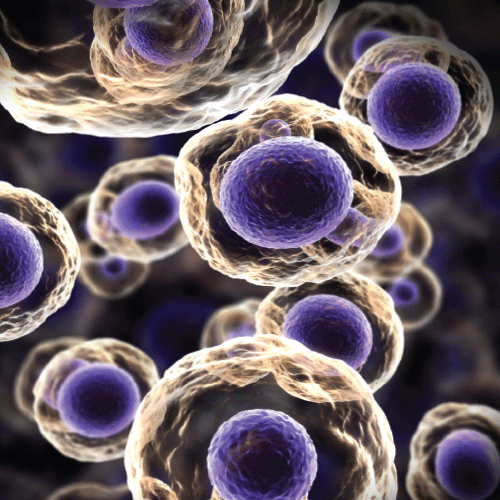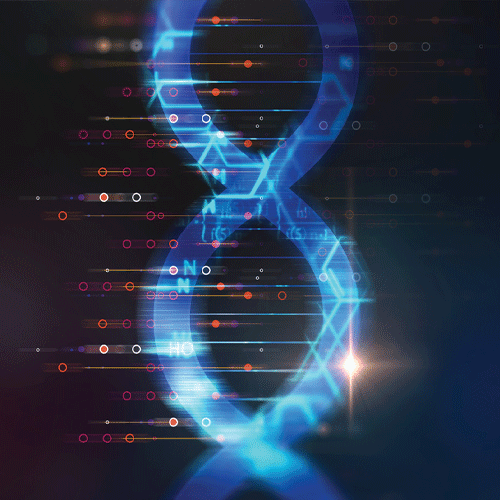Diagnosing Chromosome Disorders
 Although scientists have been able to microscopically observe chromosomes since the mid-1800’s, a century passed before staining techniques were developed to examine them on a specific and individual basis. The chromosomes could then be arranged according to size and banding pattern for detailed examination – a display called a karyotype. Once it became possible to accurately identify individual chromosomes, abnormalities in chromosome number (such as trisomy 21, also known as Down syndrome) were discovered. Karyotypes can also identify deletions, duplications, and inversions of chromosomal segments.
Although scientists have been able to microscopically observe chromosomes since the mid-1800’s, a century passed before staining techniques were developed to examine them on a specific and individual basis. The chromosomes could then be arranged according to size and banding pattern for detailed examination – a display called a karyotype. Once it became possible to accurately identify individual chromosomes, abnormalities in chromosome number (such as trisomy 21, also known as Down syndrome) were discovered. Karyotypes can also identify deletions, duplications, and inversions of chromosomal segments.
Although abnormalities on the order of millions of base pairs can be detected using the basic chromosomal banding techniques, smaller alterations cannot be discerned. More recent technologies, such as fluorescence in situ hybridization (FISH) and array comparative genome hybridization (aCGH), allow a finer level of resolution, with the ability to identify submicroscopic chromosome changes.
Array CHG has replaced karyotyping as the standard chromosome diagnostic tool to detect abnormalities in chromosome number, microdeletions and other chromosome imbalances. It is used in both prenatal and postnatal settings. Depending on the specific array, it can detect chromosomal imbalances as small as 1,000 bp in size. The use of array CGH has significantly increased the diagnosis of chromosomal imbalances among individual with clinical anomalies.
ChromoSock® kits, developed at HudsonAlpha, use custom-made socks as models for chromosomes to examine the movement of chromosomes during cell division. ChromoSocks provide a physical manipulative that allows students to investigate the impacts of errors in cell division.
HudsonAlpha-developed Disorder Detectives® asks students to take on the role of cytogeneticists to diagnose the diseases of 15 different patients using fully reusable materials, while incorporating real clinical symptoms. Students deal with a variety of abnormalities resulting from nondisjunction, deletion, inversion, and translocation.
For more information, and to find out how to purchase these kits, click here.


